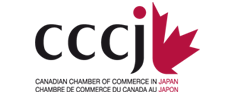Canada-Japan Ecommerce: Executive Summary
E-commerce, or electronic commerce, is playing an increasingly integral role in facilitating international trade across a variety of sectors, and as such constitutes a core element of current free trade agreements (FTA) / economic partnership agreements (EPA). This paper offers an overview of the position, form, and dynamics that e-commerce constitutes in a prospective Canada-Japan FTA / EPA. It does so by first outlining the scope of e-commerce within an FTA / EPA, and then delving into the respective lenses of Japan and Canada, through the dimensions of agreement objectives, negotiation positions, current regulatory environment, and framing reference agreements for e-commerce.
The WTO defines e-commerce as “the production, advertising, sale and distribution of products via telecommunication networks.”[1] E-commerce can be divided into its commercial aspect, entailing sale of digital goods and services provided digitally, as well as its infrastructural aspect, as a facilitator and underlying layer for commercial transactions. The scope of e-commerce within a prospective FTA/EPA includes both aspects, and references other substantive agreement chapters as overriding specific provisions in e-commerce. In other words, e-commerce often offers a duplicate, digital option to the provision of a traditional non-digital good or service. Canada includes e-commerce under the rubric of computer services, while Japan explicitly excludes government procurement, taxation, and subsidies from its e-commerce EPA scope.
What would Canada and Japan seek for e-commerce in an agreement? For Japan, clues abound in the Japan-Switzerland agreement as well as in Ministry of Economy, Trade and Industry (METI) documents (referenced below). Japan’s e-commerce objectives are three-fold: a focus on market access, namely commitments not to levy duties on digital goods and services; non-discrimination provisions, both at the most-favored nation and national treatment levels; finally, Japan would seek harmonization towards international standards of information security certificates and privacy stipulations. Canada shares Japans objectives on market access and non-discrimination, and emphasizes measures towards consumer confidence in trade of digital goods and services. While Canada has detailed domestic regulations governing privacy, security certificates, and other e-commerce enablers, Canada does not explicitly seek to unify these with international standards through FTAs.
Given these respective positions and regulatory landscape, Japan and Canada have considerable common ground in e-commerce provisions within a prospective EPA/FTA. In fact, neither party has distinct offensive or defensive positions and principles of harmonization and reciprocity may well govern agreement details on security certificates, consumer protection, and consumers and commercial privacy. It is instructive to leverage key past agreements here.
Given Canada’s developed economy and e-commerce industry capacity, for Japan, comparable EPAs (to a Canada-Japan EPA) are the Japan-Switzerland and Japan-Singapore agreements. The latter, however, does not include sufficient details on e-commerce for reference purposes. For Canada, the Canada-Peru FTA provides a roadmap of e-commerce agreement provisions, absent in the more-extensive NAFTA, due to NAFTA’s much-earlier timeframe.
International trade can have considerable impact on human rights, and the growing role e-commerce plays in trade is no exception. Two salient linkages between international e-commerce and its human rights implications are mentioned here. The first is the role that digital services play in facilitating freedom of expression, in an age where information is primarily sourced and distributed online. Market access that encourages e-commerce, including for services such as search engines, online news and blog websites, and social networks to name but a few, enhances online freedom of expression. The second linkage is the dyad between market access for banking services, specifically small-scale low-collateral commercial loan provision, and the right to credit and its subsequent effect on local economic development. In fact, microcredit and microfinance are increasingly migrating to online manifestations. Increased market access for these financial services directly impacts the ability of low-income individuals to obtain credit necessary for establishing nascent enterprises. A prospective Canada-Japan EPA holds the potential of including provisions for both of the linkages above. The may, for example take the form of a joint commitment by Japan and Canada to leverage their respective e-commerce and financial service industry strengths to provide microfinance services to developing countries.
In conclusion, e-commerce will act as a future enabler for many sectors addressed under a prospective Canada-Japan EPA. This, as well as the absence of clear offensive / defensive negotiation positions, offers fertile ground for pursuing common interests, cooperation, harmonization of standards, and reciprocity over e-commerce with a Canada-Japan EPA.
[1] Electronic Commerce and the Role of the WTO (WTOE Publications, Switzerland: 1998): p.1.
